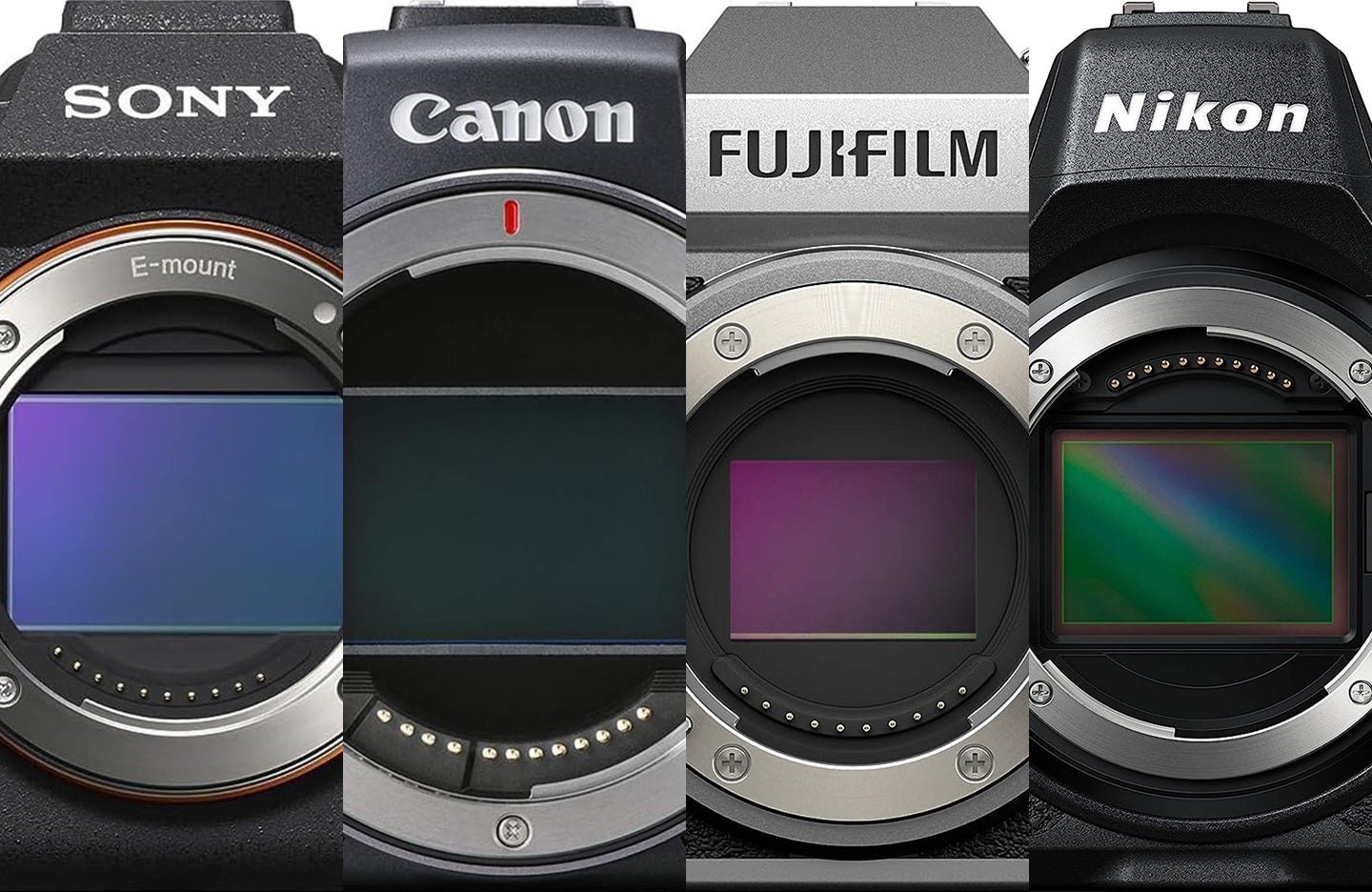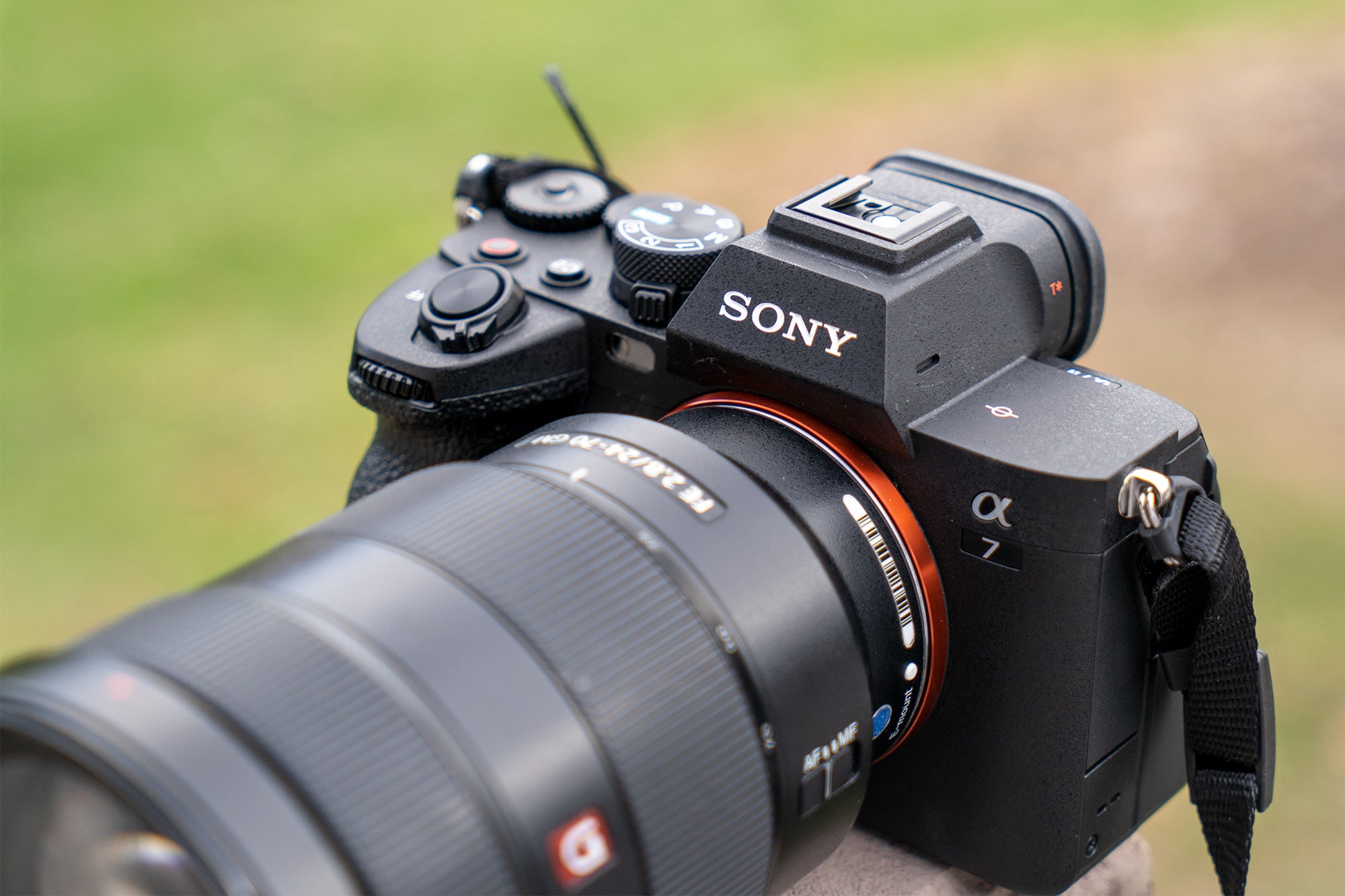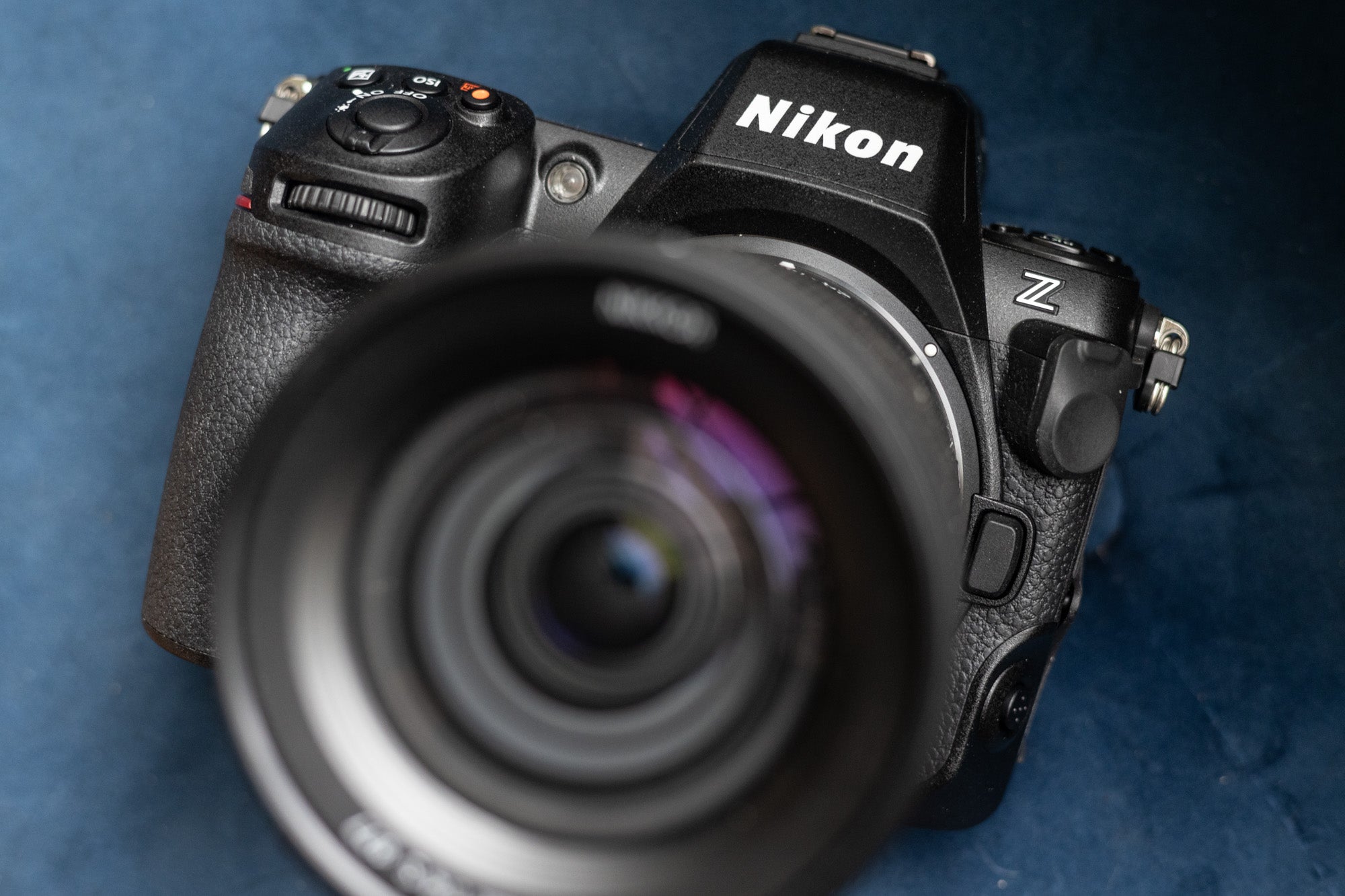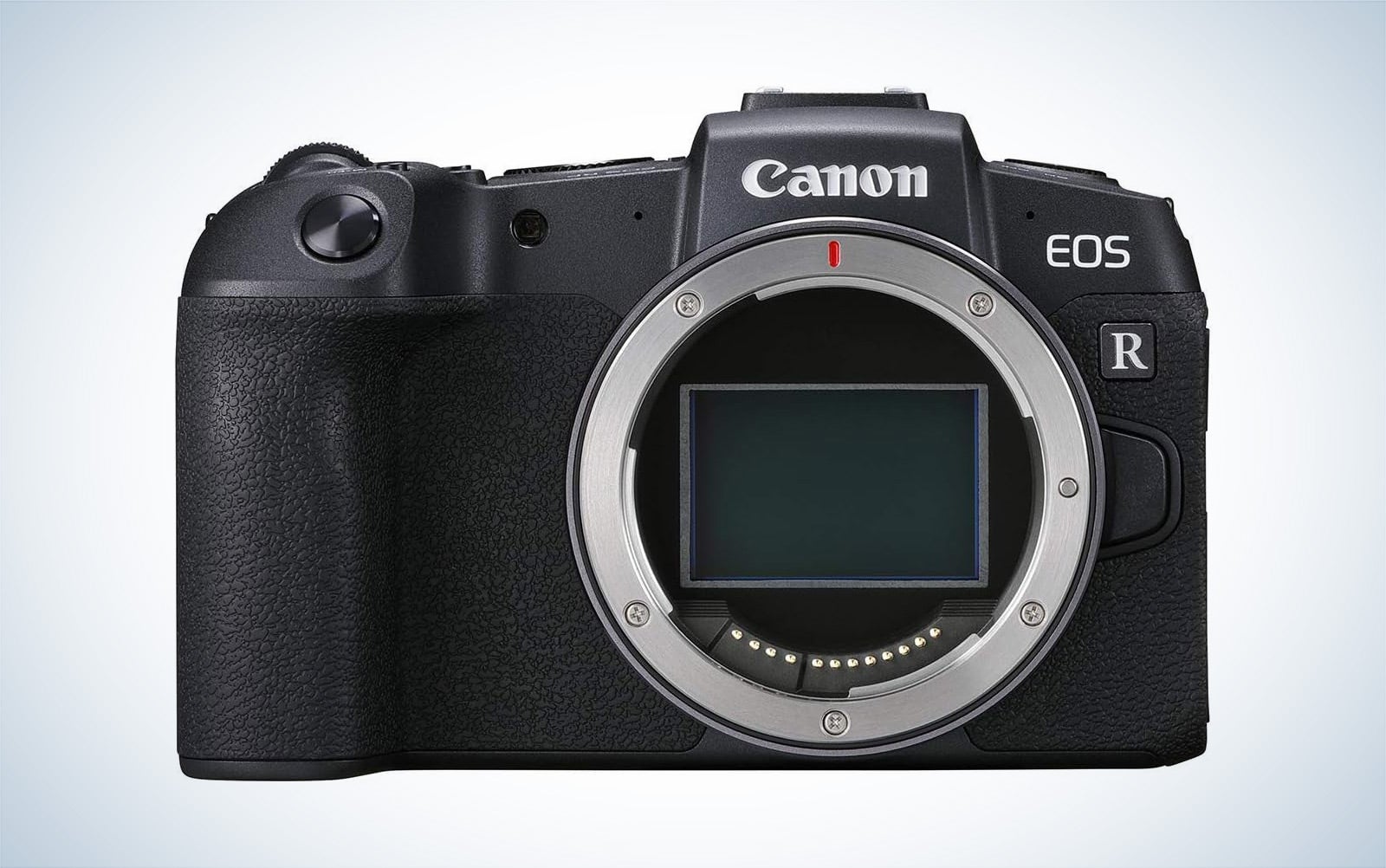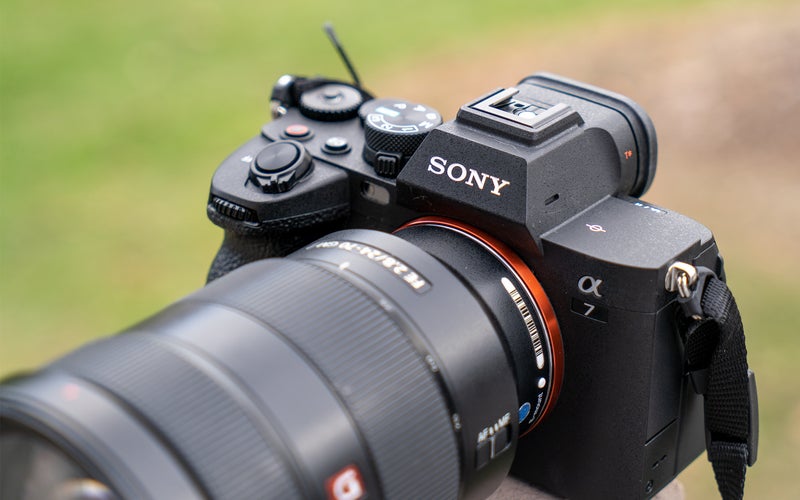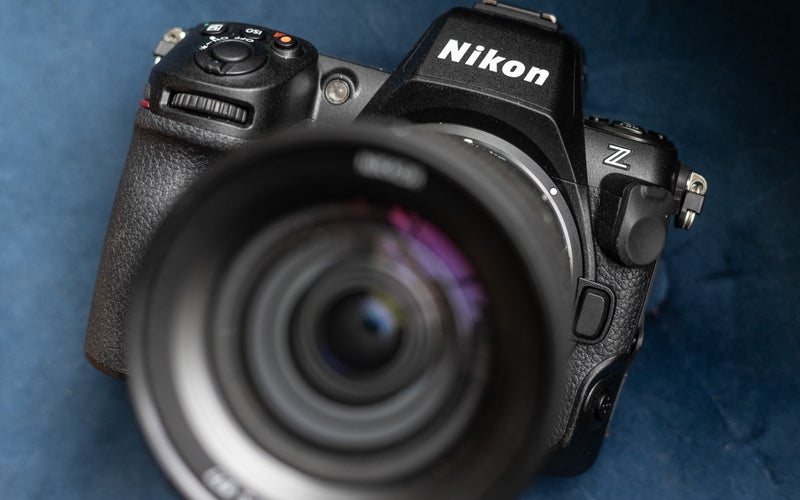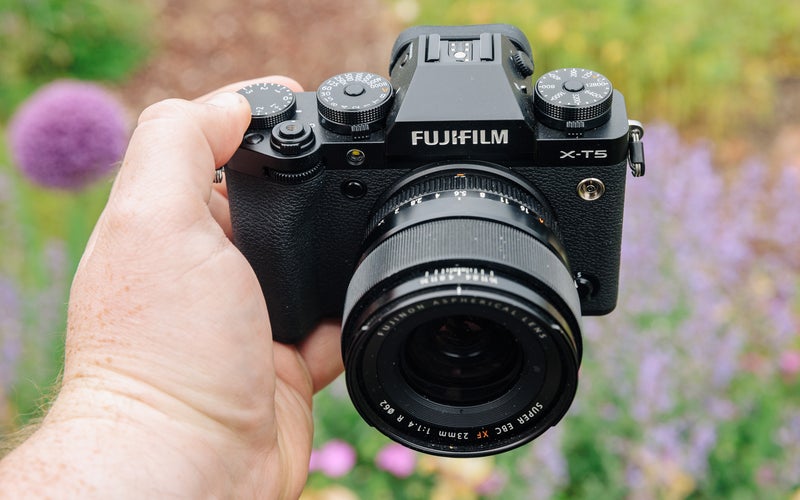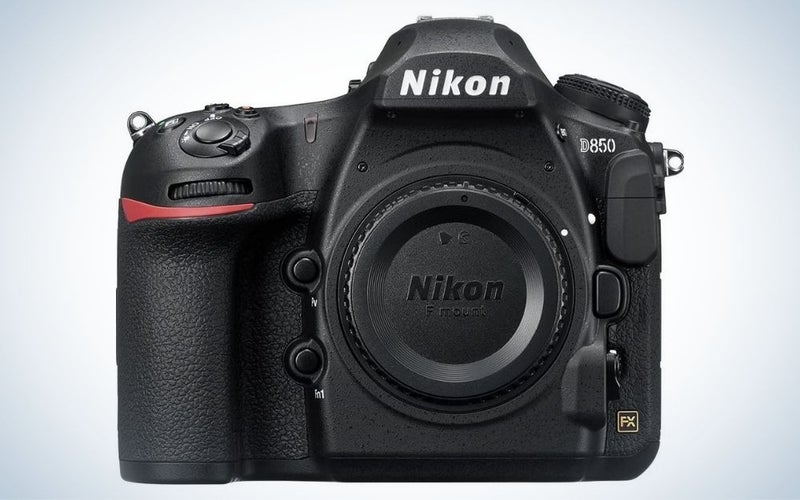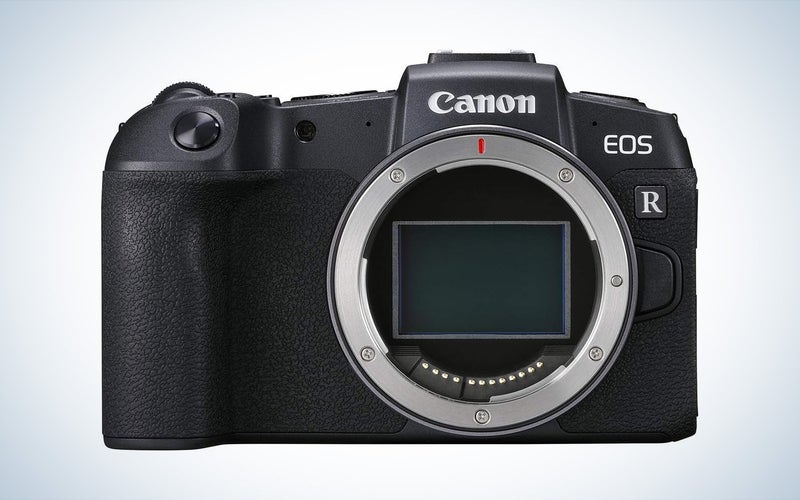We may earn revenue from the products available on this page and participate in affiliate programs. Learn more ›
Photographing the night sky has become more popular among hobbyists and professionals alike, and having a quality camera for astrophotography will give you the best chance of success. It is a fairly technical genre that requires patience, skill, and lots of practice. But with the right gear, you’ll be in a better place to get dramatic photos at night. Astrophotography includes images of sweeping landscapes with stars above as well as specific celestial objects. No matter what you want to document, the best cameras for astrophotography are ones that allow the capture of detail-rich photos of the night sky while balancing noise and resolution.
- Best overall: Sony a7 IV
- Best mirrorless: Nikon Z8
- Best for beginners: Fujifilm X-T5
- Best DSLR: Nikon D850
- Best budget: Canon EOS RP
How we chose the best cameras for astrophotography
The primary concern with astrophotography is noise performance across the ISO band. Cameras with larger sensors overwhelmingly dominate this metric, as they tend to have larger individual pixels, which increases their efficiency at gathering light and dispersing thermals. This is why all but our beginner camera contain full-frame sensors.
We were also interested in finding cameras with a high dynamic range per ISO setting. With astrophotography, one is constantly pushing the ISO while trying to maintain detail in highlights and shadows. So, having a high dynamic range at higher ISOs is paramount. Additionally, most will want to use their cameras for more than just astrophotography, so we focused on cameras that would offer versatility in a range of genres and situations.
The best cameras for astrophotography: Reviews & Recommendations
Astrophotography may be a challenging genre, but it is extremely rewarding when you get it right. Get ready to capture epic night skies with these impressive cameras for astrophotography.
Best overall: Sony a7 IV
Abby Ferguson
Specs
- Resolution: 33 megapixels
- Sensor size: Full-frame
- Lens mount: Sony E
- Image stabilization: Sensor-Shift, 5-Axis
- Memory card slots: Slot 1: CFexpress Type A / SD (UHS-II), Slot 2: SD/SDHC/SDXC (UHS-II)
- Weight: 1.4 pounds
- Dimensions: 5.2 x 3.8 x 3.1 inches
Pros
- Incredible low-light performance
- Advanced features for video and stills
- High dynamic range
- Dual card slots
Cons
- Rear screen is lower resolution than competitors
The a7 IV is a versatile performer that can do it all, which is why it earned our top spot. Its 33-megapixel sensor offers a nice amount of detail without producing excessively large files. It offers impressive dynamic range, which makes it possible to bring back a lot more highlight and shadow detail. That’s a plus when documenting the night sky, especially if the moon is in your shots. When paired with a lens for astrophotography, such as the Sigma 14mm f/1.4, this camera will produce some stunning images.
This camera will exceed expectations in taking both stills and video when paired with a fast lens. Its high ISO performance means you can even capture usable video of the night sky. The a7 IV is also very lightweight, meaning it will work just as well atop even the smallest star trackers or timelapse rotators. Couple that with its “Bright Monitoring” feature, which enhances the exposure in live view, and you’ll never again struggle to find compositions on a tracker or tripod.
To read more about the Sony a7 IV, check out our full review. If you like the a7 line but want to save a little money, the Sony a7 III, though a generation old, is still a fantastic camera for astrophotography. In fact, it was the most used camera in the Astronomy Photographer of the Year contest.
Best mirrorless: Nikon Z8
Stan Horaczek
Specs
- Resolution: 45.7 megapixels
- Sensor size: Full-frame
- Lens mount: Nikon Z
- Image stabilization: Sensor-Shift, 5-Axis
- Memory card slots: Slot 1: CFexpress Type B / XQD, Slot 2: SD/SDHC/SDXC (UHS-II)
- Weight: 2 pounds
- Dimensions: 5.7 x 4.7 x 3.3 inches
Pros
- Impressive noise performance
- Excellent low-light performance
- High-resolution sensor results in detailed photos
- Top mount OLED screen
Cons
- Expensive
- Battery life could be better
If you are serious about photography in general and astrophotography specifically, the Nikon Z8 is a fantastic choice. It offers the impressive performance of the Nikon Z9 in a smaller, cheaper body. It is still a pricey camera, so it is best suited for pros or serious enthusiasts. The 45.7-megapixel sensor results in highly detailed images. Your starry landscapes will hold up to even large-scale printing. And images look great even up to ISO 6400, especially with some noise reduction.
The Z8 also offers excellent dynamic range, giving you more flexibility when editing. It even offers a setting specific to astrophotography. The Starlight View setting lowers the autofocus detection range to -9EV, which is lower than most. There is also a night vision mode that automatically dims the screen and changes the electronic viewfinder to red pixels only.
Beyond astrophotography, this camera provides advanced autofocus abilities to keep your shots in focus. It is capable of burst shooting of 20 fps full-res raw, or up to 120 fps with the quality lowered to 11-megapixel jpg files. It offers 8K video recording with multiple high-end 4K formats as well. And the body is comfortable to hold with lots of customization options.
To learn more about the Nikon Z8, check out our full review.
Best for beginners: Fujifilm X-T5
Stan Horaczek
Specs
- Resolution: 40.2 megapixels
- Sensor size: APS-C
- Lens mount: Fujifilm X
- Image stabilization: Sensor-Shift, 5-Axis
- Memory card slots: Dual slot: SD/SDHC/SDXC (UHS-II)
- Weight: 1.2 pounds
- Dimensions: 5.1 x 3.6 x 2.5 inches
Pros
- 40-megapixel sensor results in excellent detail
- Attractive Fujifilm color science with built-in film simulations
- Lots of tactile controls
- Compact compared to full-frame
Cons
- No lit-up top screen for seeing settings
Fujifilm’s X-T5 is a great all-around camera, but it excels at still photos. It is an excellent choice for someone wanting to get started with astrophotography. The camera body is very lightweight and compact, making it easy to pack in if you hike to your astrophotography destinations. It’s also a durable body, capable of handling temperatures as low as 14°F for those winter night shoots.
Unfortunately, there is no top screen, meaning you have to use the viewfinder or rear screen to check settings, a downside when shooting low or trying to conserve battery. But the old-school physical controls help with that and make it easy to adjust settings without specifying a mode. In addition, the vari-angle screen makes it easier to compose your images when shooting at low angles. Though the camera is an APS-C sensor, it still puts out quality images at a reasonable price for beginners.
The ISO range of the XT-4 goes up to 12,800 and can extend to 51,200, giving lots of flexibility for astrophotography. The noise levels are impressive, allowing you to take advantage of some of those higher ISOs without losing the stars to noise. We found the files held up well until roughly ISO 4,000, but the high-resolution sensor gives you more data to work with when utilizing noise reduction software.
As is typical with Fujifilm cameras, the colors are excellent right out of the camera. Plus, it comes with a long list of attractive film simulations built-in, so you don’t need to spend time editing in order to get polished-looking photos. That’s an ideal option for many beginners. Should you want to edit your images, you’ll get plenty of dynamic range, especially for an APS-C, giving you lots of room to play around.
To learn more about the Fujifilm X-T5, check out our full review.
Best DSLR: Nikon D850
Nikon
Specs
- Resolution: 45.7 megapixels
- Sensor size: Full-frame
- Lens mount: Nikon F
- Image stabilization: None
- Memory card slots: Slot 1: SD/SDHC/SDXC (UHS-II), Slot 2: CFexpress Type B / XQD
- Weight: 2.01 pounds
- Dimensions: 5.7 x 4.9 x 3.1 inches
Pros
- High resolution
- Exceptional battery life
- Access to F-mount lens range
- Backlit buttons
Cons
- Expensive
- Heavy with a large footprint
The Nikon D850 might be the last great DSLR in production today, and it’s likely the end of a generation of large, substantially robust cameras. In an era where most modern prosumer cameras feel like toys, the D850 stands out as a tool for the most rugged and extreme adventures. Its 45.7 megapixels and lack of an anti-aliasing filter help it achieve details other cameras only dream about. But its largest advantage over the competition is the F-mount. The ability of the D850 to natively support the hundreds of legacy F-mount lenses might be a boon to those who want to offset the cost of this camera by getting some inexpensive glass.
Although high-resolution cameras tend to suffer in low-light photography, especially in deep-sky astrophotography, the D850 holds its own in high dynamic range, low read noise, and shadow detail at higher ISOs. It also has some pretty nifty features that the competition is lacking. For example, none of the other cameras on this list have backlit buttons. In fact, not many cameras in existence have this feature, which is a big deal if you’re doing a lot of night photography. And then there’s battery life, which will never be an issue when owning the D850.
The only real downside to this camera is its size and price. Some consumers may not be able to justify the high cost of a camera system that is becoming obsolete.
Best budget: Canon EOS RP
Canon
Specs
- Resolution: 26.2 megapixels
- Sensor size: Full-frame
- Lens mount: Canon RF
- Image stabilization: Digital, 5-axis (video only)
- Memory card slots: Single slot: SD/SDHC/SDXC (UHS-II)
- Weight: 1.07 pounds
- Dimensions: 5.2 x 3.3 x 2.8 inches
Pros
- Affordable
- Good noise characteristics
- Built-in time-lapse tools
- Very compact and lightweight
Cons
- 4K video results in a significant crop
- Dynamic range could be better
The Canon EOS RP is essentially the mirrorless replacement for the popular 6D Mark II. In fact, it uses the same sensor. That’s a plus for astrophotography since the 6D Mark II has long been one of the top choices for the genre. It provides good noise handling at higher ISOs, so your stars won’t be totally washed out in noise. And it results in high-quality jpg files with a good amount of detail and excellent colors, so you don’t have to fuss with raw files if you don’t want to.
The EOS RP also features built-in time-lapse tools, so you can take time-lapse videos of the stars. Although you’ll mostly use manual focus when capturing the night sky, the camera offers excellent autofocus performance. It is also a tiny camera, especially for one that uses a full-frame camera. It will be much easier to hike into backcountry locations for darker skies.
There are still limited options for third-party, affordable lenses for Canon mirrorless cameras, which is one of the main downsides to the RP. If you already have some Canon EF lenses, you can always use an adapter and save some money on new glass.
What to consider before buying a camera for astrophotography
If your main goal is to take still photos at night, there are a lot of features on modern cameras that will be irrelevant to your pursuit. Marketing will hype up features related to autofocus, extreme ISO ranges, video capabilities, and in-body image stabilization (IBIS), but in practice, these features are inconsequential to astrophotography, so take them with a grain of salt. That said, if you want one camera that can handle everything, those may be features that are essential for you.
Mirrorless vs DSLR
Mirrorless cameras aren’t inherently better than DSLRs for astrophotography. However, most camera and lens manufacturers have begun to phase out releases or even production of DSLR gear, and the camera format is becoming rather outdated. As a result, it is likely a wiser investment to go with a mirrorless system. Luckily, mirrorless cameras are typically more compact and lightweight. That makes them easier to work with if you need to travel to a dark sky location.
The downside is that there are fewer lens options available for mirrorless cameras at this point, specifically for Nikon and Canon. But companies are churning out new releases on a regular basis, and third-party lens makers have begun releasing options as well, so this will become a moot point in the near future.
Megapixels & sensor size
Generally speaking, cameras with larger sensors outperform those with smaller sensors in low light. But that’s only half of the story. The reason larger sensors generally perform better in low light is because of the ratio of pixels to sensor size, which can be measured by the individual pixel size. Larger sensors have more surface area to place individual pixels, and the larger the individual pixel size, the more efficient it will be at collecting light and dispersing thermals. So, the key to low light performance is having a balance between megapixel count and sensor size.
Budget
Cameras that perform well for astrophotography can range from $500 to $5000. The main differences between cameras in this broad spectrum are photographer aid features, such as live view zooming, enhanced exposure, backlit buttons, etc. Yes, quality does get better the more money you throw down, but only incrementally. If your main focus is astrophotography, an increase in price doesn’t necessarily mean an increase in quality.
FAQs
Q: Are DSLRs good for astrophotography?
DSLRs are perfectly fine for astrophotography. It’s not the mirror—or lack thereof—that matters; it’s the sensor behind it that makes the difference. For now, DSLRs still have the same sensors and image processing chips as mirrorless cameras, so there’s no real difference in the results they produce. But DSLRs are slowly becoming obsolete, and the technological difference between them and mirrorless has become more significant.
Q: Is full-frame better for astrophotography?
If you plan on taking landscape astrophotography images, you will likely want a full-frame camera. The larger sensors in full-frame cameras generally perform much better than APS-C or Micro Four Thirds cameras, especially when they’re under 30 megapixels. This is because the individual pixels on the sensor are significantly larger and more efficient at collecting light and dispersing thermals, two key factors in helping increase the performance of a sensor.
Lenses specifically made for full-frame cameras are also more efficient at gathering light toward that sensor. Wide and ultra-wide angle lenses for full-frame cameras generally deal with distortion and chromatic aberration significantly better than lenses designed for smaller sensors. Going with a full-frame camera and lenses comes at a cost, though, as making the jump to full-frame can be a significant investment.
Q: Do megapixels matter?
In terms of low-light performance, yes, megapixels matter. Cameras with full-frame sensors and low megapixel counts will generally outperform full-frame cameras with higher megapixel counts. This is one reason why Sony has three tiers of the full-frame a7 camera. The a7S has the lowest megapixel count and is built for low-light performance, while the a7R has the highest megapixel count and is built for resolution. The a7 is in between to bridge the gap between performance and resolution.
Final thoughts on the best cameras for astrophotography
- Best overall: Sony a7 IV
- Best mirrorless: Nikon Z8
- Best for beginners: Fujifilm X-T5
- Best DSLR: Nikon D850
- Best budget: Canon EOS RP
Astrophotography is still a niche pursuit. Picking the right camera for this genre is a delicate balance of selecting individual features and low-light performance versus price. Don’t automatically assume that the newest camera is the best choice for astrophotography. The newest features on the latest camera models don’t always improve their functionality and usability as it pertains to astrophotography, and you could end up paying more for features that won’t apply to this genre. The choices above reflect these concerns. After all, the camera is only one part of the equation; if you’re economical with your decision, you should have savings to apply to better-quality glass.
Why trust us
PopPhoto has a long history of delivering the opinions of some of the sharpest and most prolific camera dorks the world has to offer. Since 1937, we’ve been reviewing cameras, providing wisdom from well-known photographers, and generally just nerding out about all that goes into making great pictures. Our current crop of writers and editors have decades of professional photography and camera writing experience among them. Collectively, we’ve probably shot with just about every camera and lens combo you can imagine—as well as some obscure stuff you may not even know about. Remember the Casio Tryx folding camera? PopPhoto does.
We also get that buying a camera is a big decision, which is why we’re dedicated to helping folks choose the right one (or, in our case “ones”) for their needs. Case in point: Handing over top dollar for an expensive rig may leave you unsatisfied if it doesn’t fit your preferred shooting style. Sure, a $6,000 sports-oriented DSLR can capture landscapes, but do you really need to do it at 30 frames-per-second? No, you don’t.
